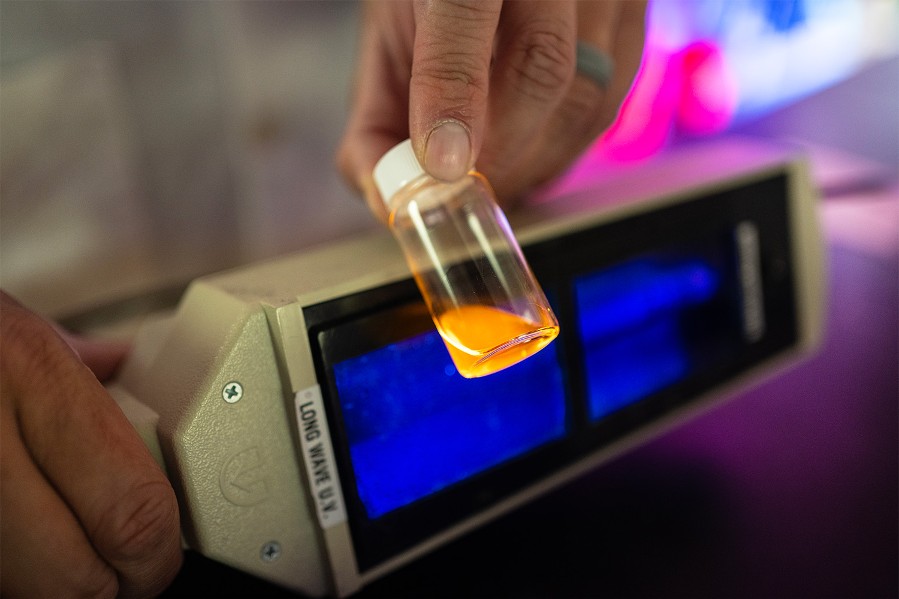Summary: University of Texas at Dallas researchers have discovered that X-ray imaging using gold nanoparticles as a contrast agent could be more effective in detecting kidney disease than standard blood tests, potentially revolutionizing diagnostic methods.
Estimated reading time: 5 minutes
In a groundbreaking study published in Advanced Materials, researchers at the University of Texas at Dallas have uncovered a promising new method for detecting kidney disease. Their findings suggest that X-ray imaging using gold nanoparticles as a contrast agent may surpass the accuracy of traditional blood tests in identifying kidney damage.
The study, conducted on mice, not only sheds light on improved diagnostic techniques but also raises important questions about the use of nanoparticle-based medications in patients with compromised kidney function.
Nanoparticles and Kidney Function: A Complex Relationship
Currently, doctors assess kidney function through blood tests measuring urea nitrogen (BUN) and creatinine (Cr) levels before administering renal-clearable drugs. However, with the increasing use of engineered nanoparticles in drug delivery and imaging, understanding how kidney damage affects nanoparticle movement and elimination has become crucial.
The UT Dallas team found that in mice with severe kidney injury, where BUN and Cr levels were ten times normal, nanoparticle transport through the kidneys slowed significantly. This resulted in prolonged retention of nanoparticles in the kidneys.
Interestingly, in cases of mild kidney injury where BUN and Cr levels were only four to five times higher than normal, these standard tests failed to accurately predict nanoparticle behavior. However, the researchers observed that the accumulation of gold nanoparticles visible on X-rays correlated strongly with the degree of kidney damage.
Dr. Mengxiao Yu, a corresponding author of the study and research associate professor of chemistry and biochemistry, commented on the findings:
“While our findings emphasize the need for caution when using these advanced treatments in patients with compromised kidneys, they also highlight the potential of gold nanoparticles as a noninvasive way to assess kidney injuries using X-ray imaging or other techniques that correlate with gold accumulation in the kidneys.”
Implications for Future Diagnostics and Treatment
This research opens up new possibilities for kidney disease diagnosis and monitoring. The use of gold nanoparticles as an X-ray contrast agent could provide a more accurate and comprehensive assessment of kidney function compared to traditional blood tests.
Moreover, the study underscores the importance of careful consideration when using nanoparticle-based treatments in patients with kidney issues. As the field of nanomedicine continues to advance, these findings may influence how doctors approach treatment plans for patients with compromised kidney function.
The study was a collaborative effort, with contributions from researchers at UT Southwestern Medical Center and Vanderbilt University Medical Center. It was funded by the National Institute of Diabetes and Digestive and Kidney Diseases and the Cancer Prevention and Research Institute of Texas.
As this research progresses, it may lead to more precise diagnostic tools and safer treatment options for patients with kidney disease, potentially improving outcomes and quality of life for millions of people worldwide.
Quiz
- What contrast agent did the researchers use in X-ray imaging to detect kidney disease?
- How many times higher than normal were the BUN and Cr levels in mice with severe kidney injury?
- According to the study, what correlated strongly with the degree of kidney damage?
Answer Key:
- Gold nanoparticles
- Ten times normal
- The amount of gold nanoparticle accumulation seen on X-rays
Further Reading
- National Institute of Diabetes and Digestive and Kidney Diseases: https://www.niddk.nih.gov/
- Advanced Materials Journal: https://onlinelibrary.wiley.com/journal/15214095
- University of Texas at Dallas Research News: https://news.utdallas.edu/tag/research/
Glossary of Terms
- Nanoparticles: Microscopic particles with dimensions less than 100 nanometers, often used in medicine for drug delivery or imaging.
- Renal-clearable: Capable of being filtered and eliminated by the kidneys.
- BUN (Blood Urea Nitrogen): A waste product normally removed by the kidneys, used as a measure of kidney function.
- Creatinine (Cr): A chemical waste product produced by muscle metabolism, also used to evaluate kidney function.
- Contrast agent: A substance used to increase the contrast of structures or fluids within the body in medical imaging.
- Nanomedicine: The medical application of nanotechnology, including the use of nanomaterials for diagnosis, treatment, and prevention of diseases.
Enjoy this story? Get our newsletter! https://scienceblog.substack.com/
If our reporting has informed or inspired you, please consider making a donation. Every contribution, no matter the size, empowers us to continue delivering accurate, engaging, and trustworthy science and medical news. Independent journalism requires time, effort, and resources—your support ensures we can keep uncovering the stories that matter most to you.
Join us in making knowledge accessible and impactful. Thank you for standing with us!

